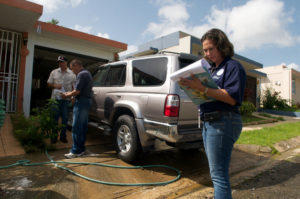
Signs of a slow-moving recovery are apparent in Puerto Rico six months after the territory was devastated by back-to-back hurricanes and two months before the next hurricane season begins.
“As the next hurricane season quickly approaches, appropriating funds to a rapid deployment, energy independent private sector disaster recovery and business continuity communications network should be a top priority,” said Elliot Pacheco, owner of a drug store in Cayey- Puerto Rico.
Puerto Rico’s capital, San Juan, is filled with FEMA and continental utility workers replacing the island’s electric grid which was dilapidated before Hurricane Maria and nonexistent afterward. However, other parts of the island are still struggling today and are seeing improvements at a much slower pace.
One of the biggest challenges has been the lack of a territory-wide emergency communications system. In Cayey, a town of about 50,000 people 20 miles south of San Juan, the only way to communicate with the outside world immediately after the hurricane was an AM radio station that kept transmitting in the aftermath of Maria.
FCC Chairman Ajit Pai and Puerto Rico Resident Commissioner Rep. Jenniffer González-Colón (R) announced last week a $954 million investment in communications networks for Puerto Rico and the U.S. Virgin Islands. According to them, the money will be invested in three phases: $64 million for restoration efforts for damaged communications equipment, $631 million for long-term restoration and expansion efforts, and $259 million for 4G connectivity.
But Pai said all the investment in communications depends on a reliable power grid, which is why Puerto Rico’s retailers are lobbying for an emergency communications system that will operate even after the power goes out. Puerto Ricans accept that, while Maria may have been a once-in-a-generation storm, the territory is in the path of Atlantic hurricanes and will have to weather them again.

Recent Comments